Abstract
Seventeen pigeons were exposed to a three-key discrete-trial procedure in which a peck on the lit center key produced food if, and only if, the left keylight was lit. The center key was illuminated by a peck on the lit right key. Of interest was whether subjects pecked the right key before or after the response-independent onset of the left keylight. Pecks on the right key after left-keylight onset suggest control of behavior by the left keylight—an establishing stimulus. In three experiments, the strength of center-keylight onset as conditioned reinforcer for a response on the right key was manipulated by altering the size of the reduction in time to food delivery correlated with its onset. Control of pigeons' key pecks by onset of the left keylight occurred on more trials per session when the center keylight was a relatively weak conditioned reinforcer and on fewer trials per session when the center keylight was a relatively strong condtioned reinforcer. Differences across conditions in the degree of control by onset of the establishing stimulus were greatest when changes in conditioned reinforcer strength occurred relatively frequently and were signaled. The results provide evidence of the function of an establishing stimulus.
Keywords: establishing stimulus, conditioned reinforcement, conditional conditioned reinforcement, delay-reduction hypothesis, key peck, pigeons
Full text
PDF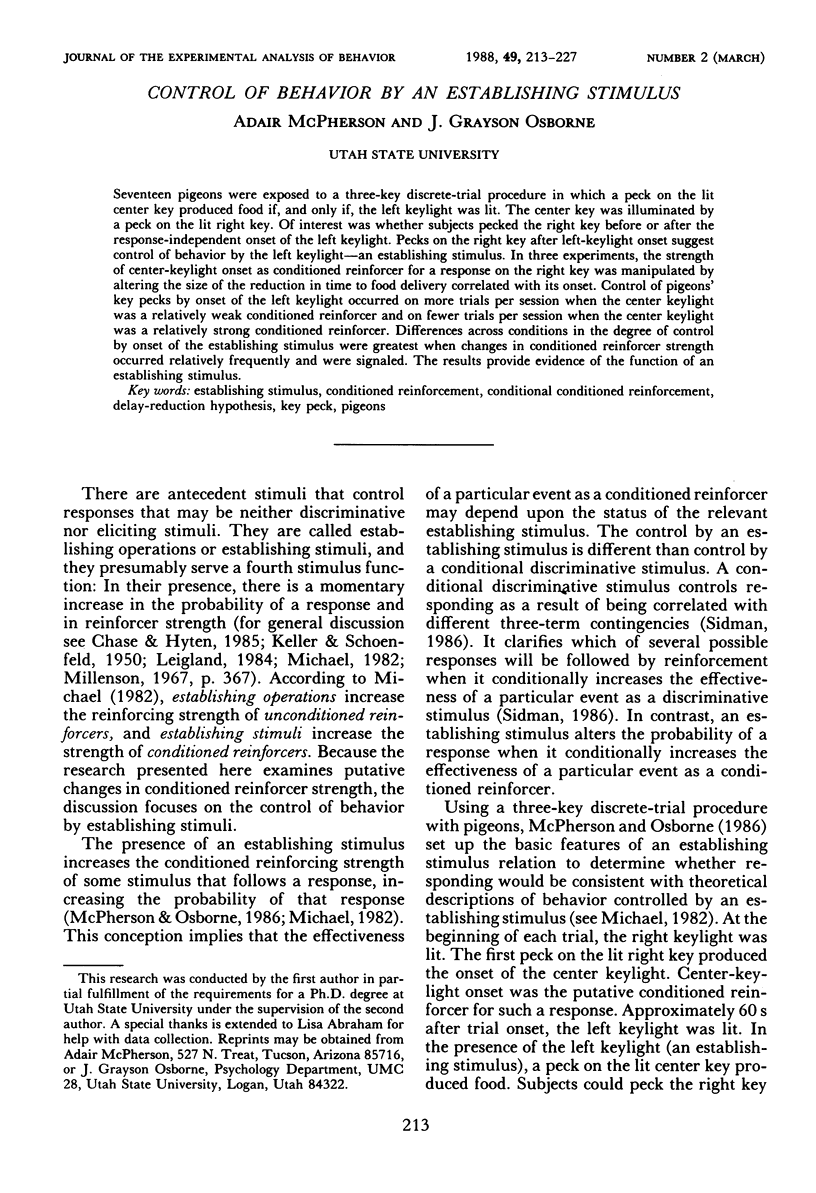
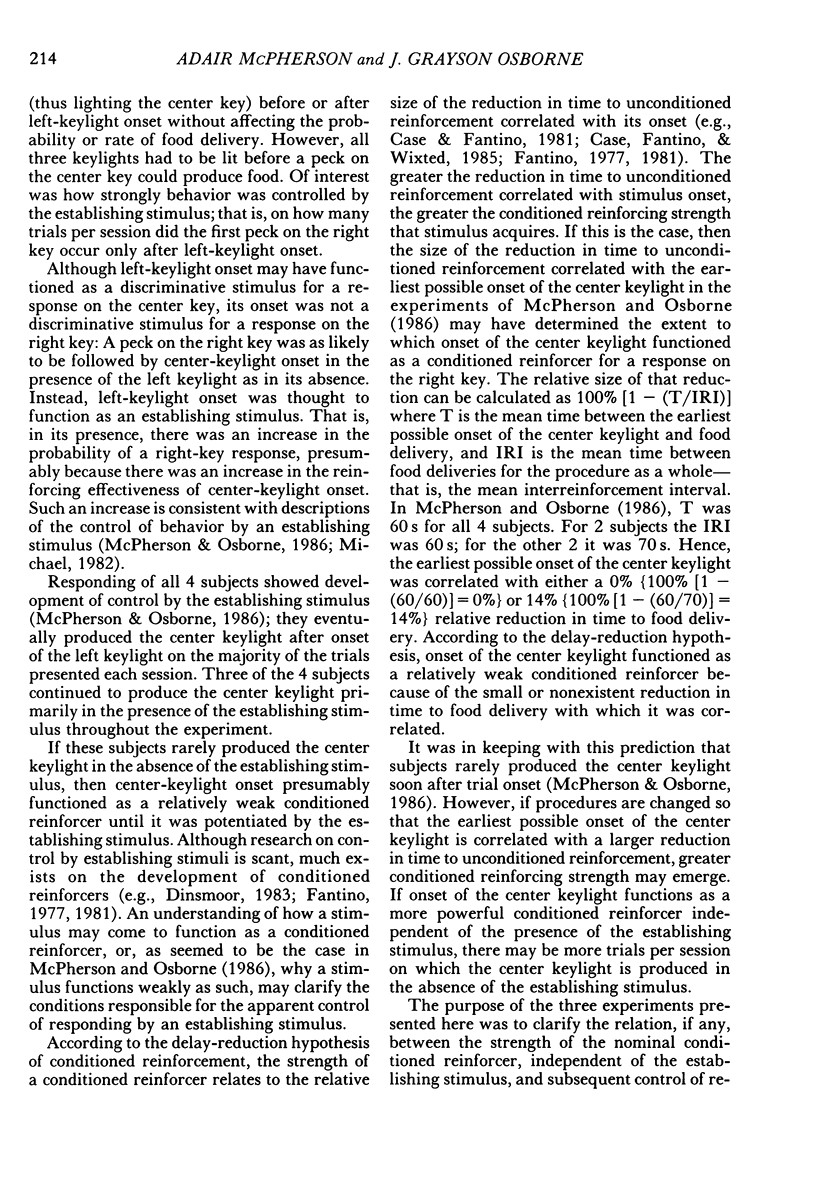
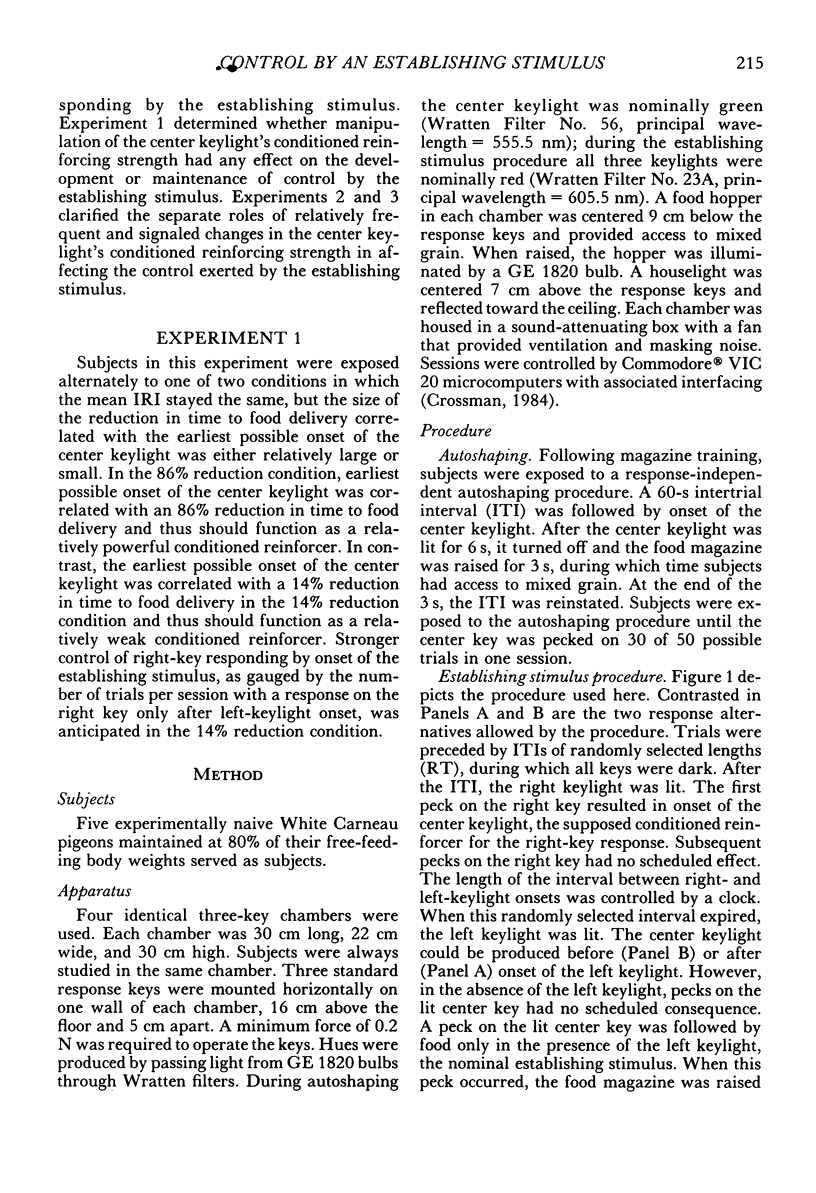
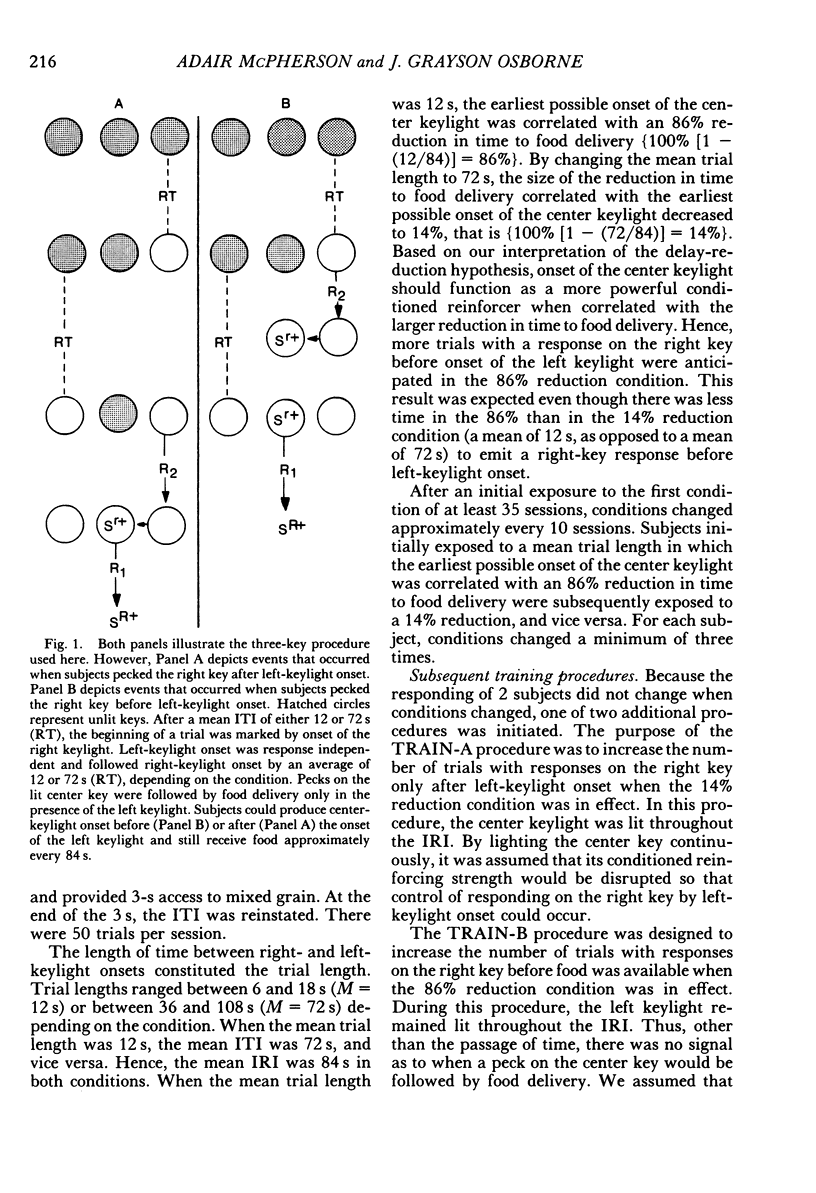
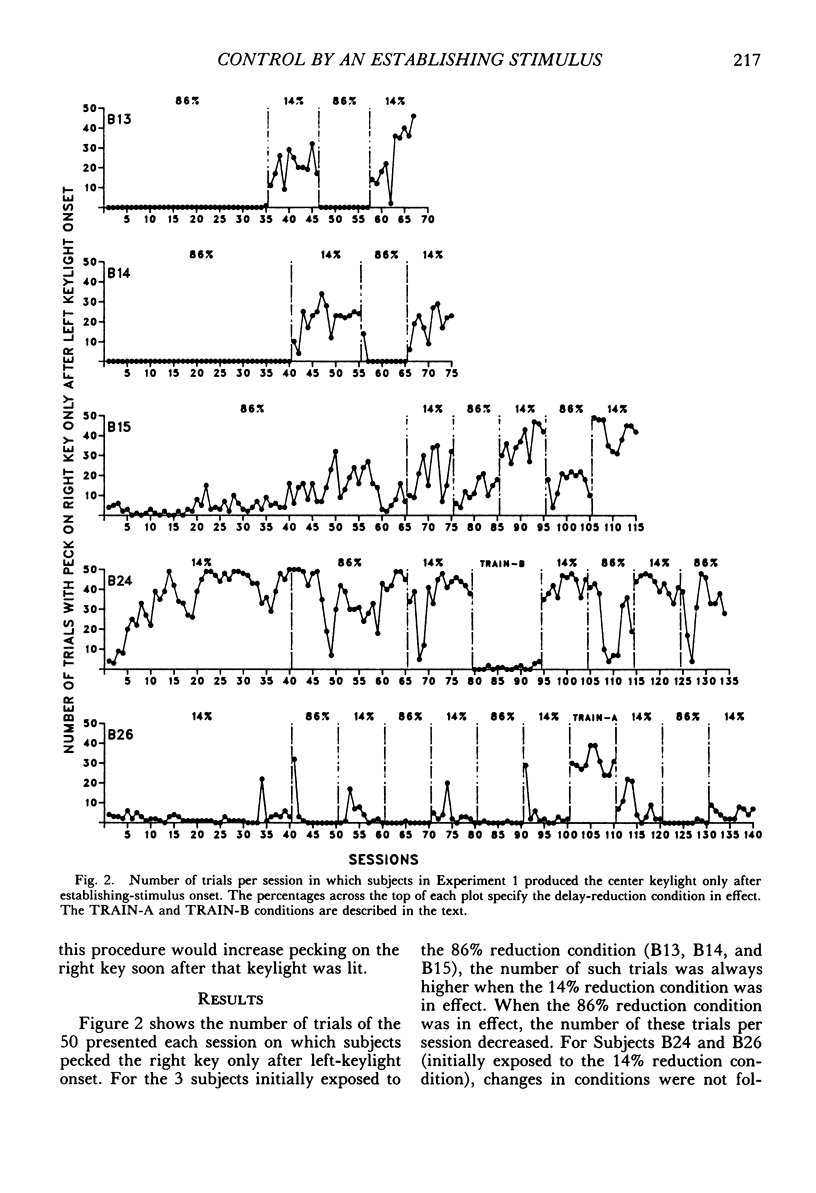
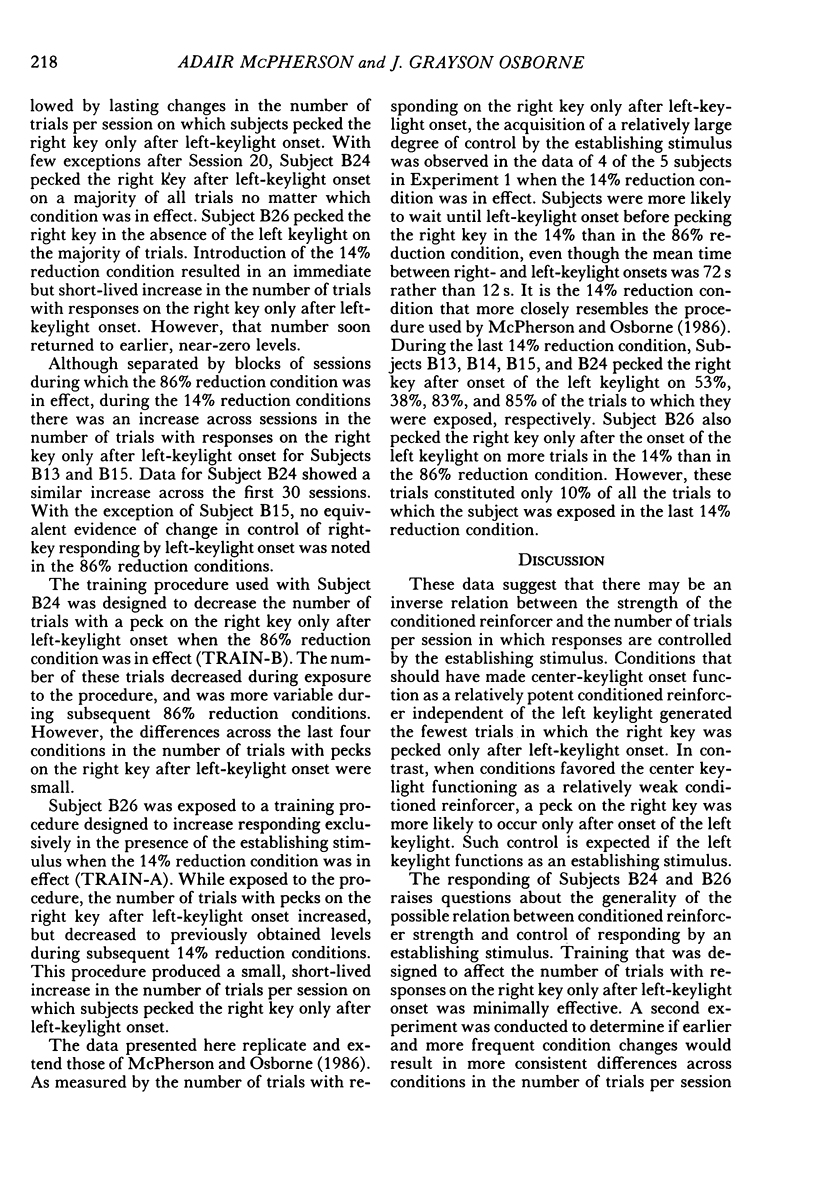
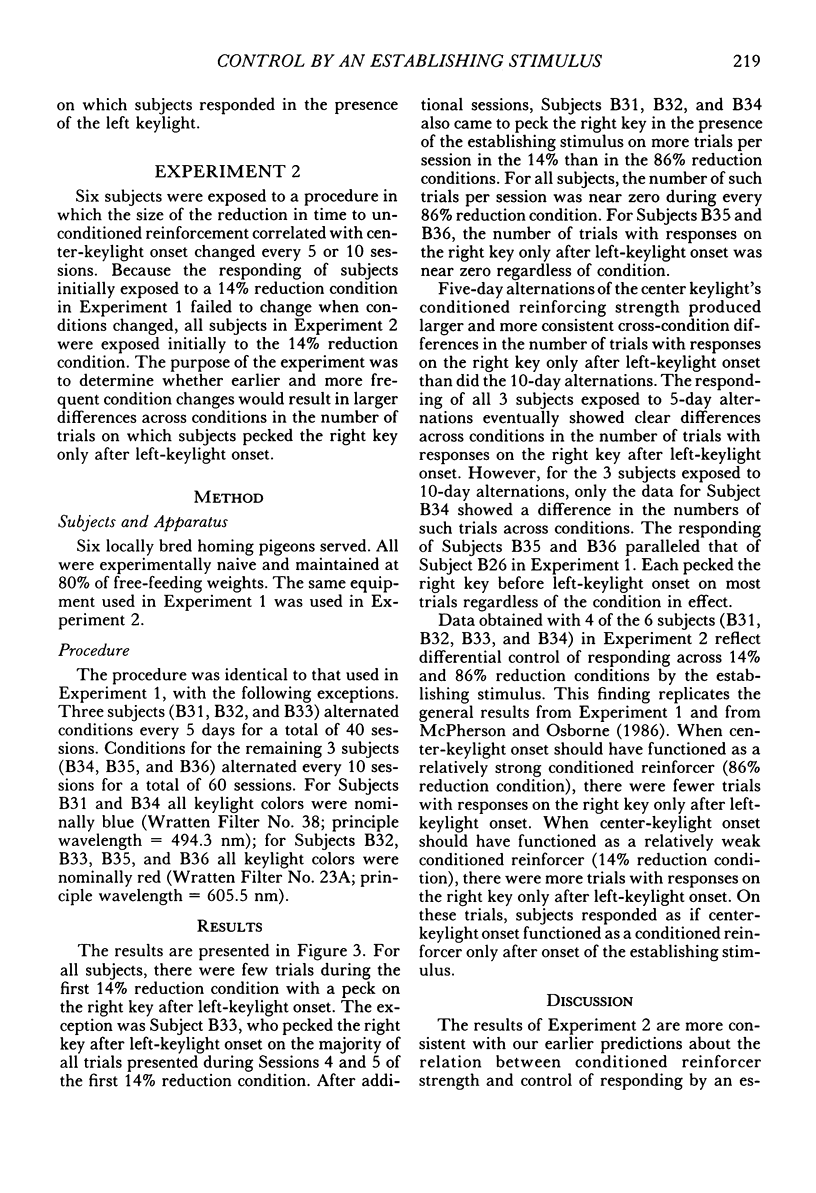
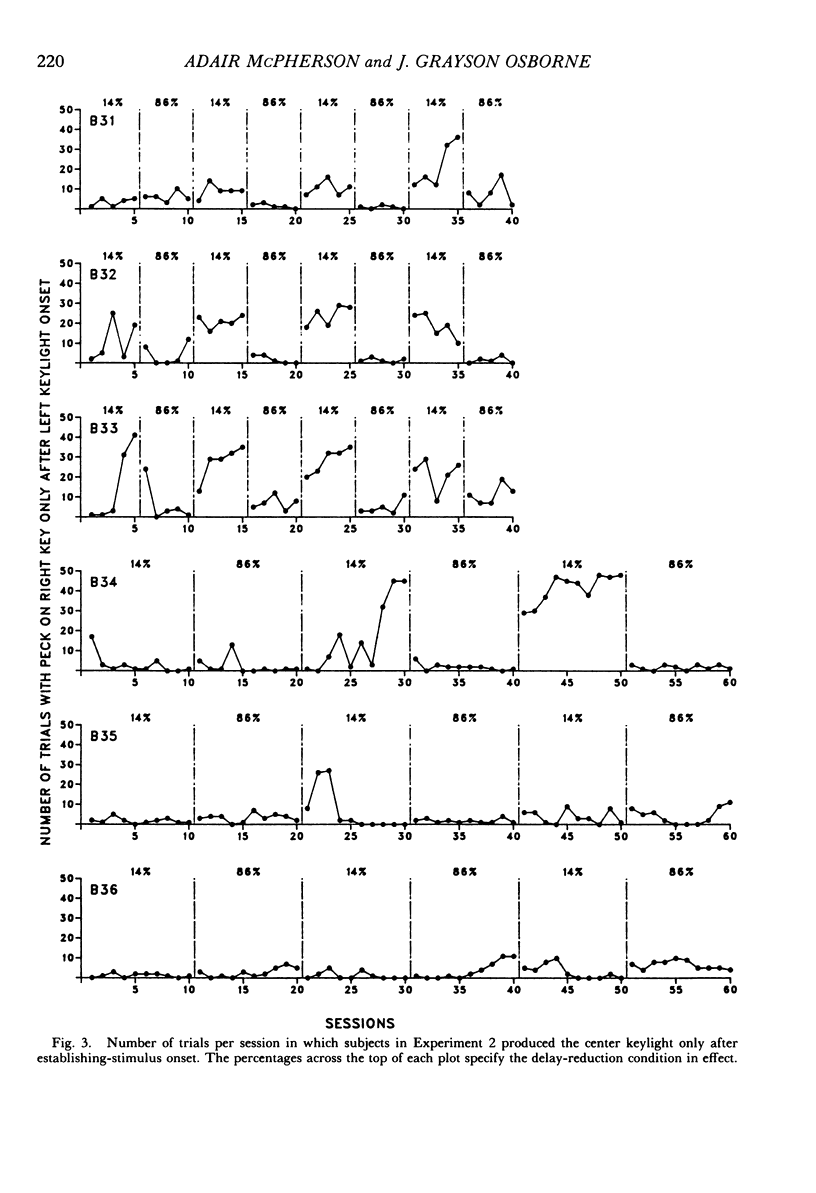
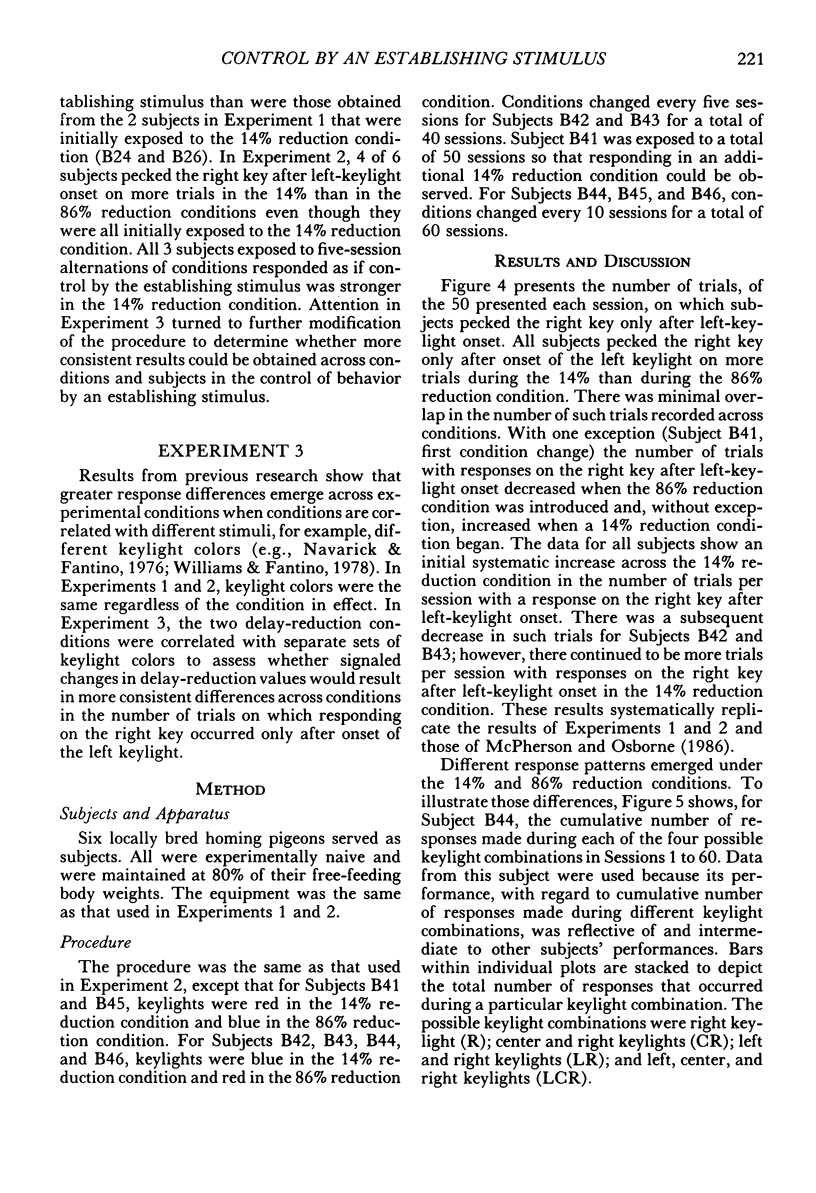
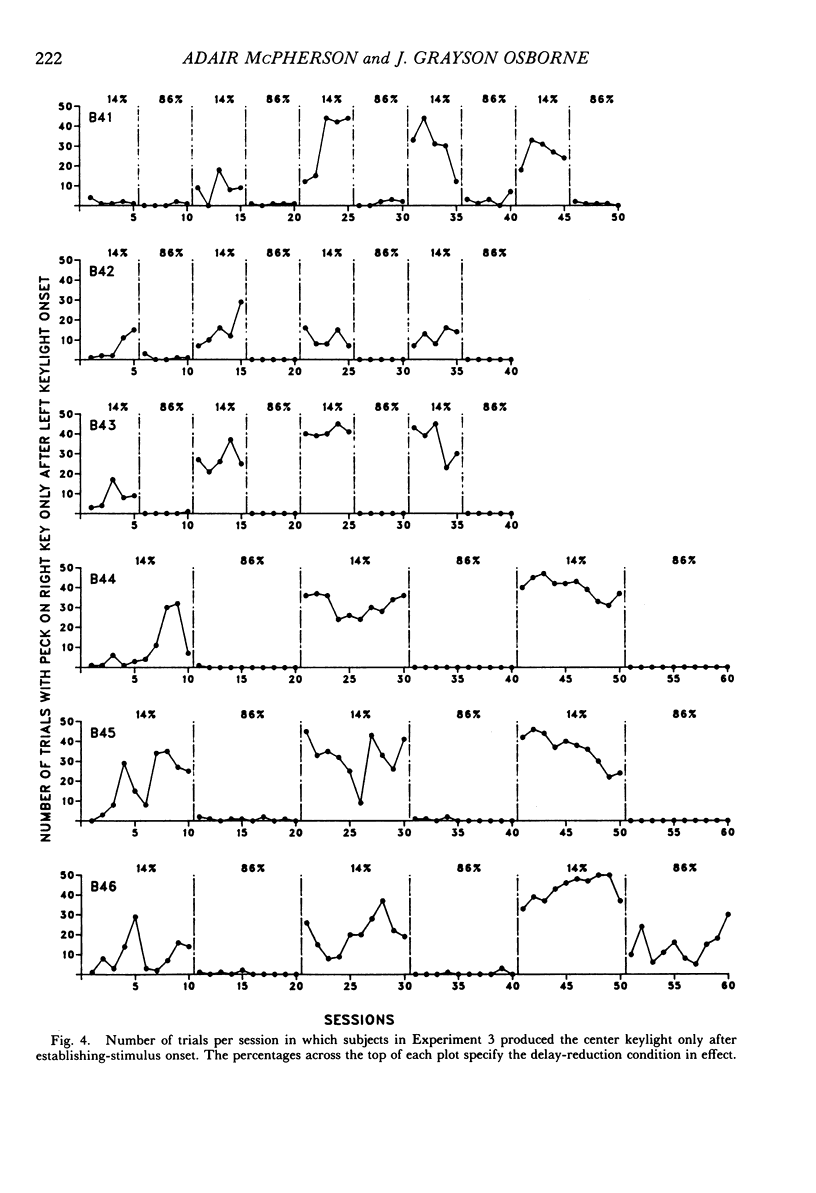
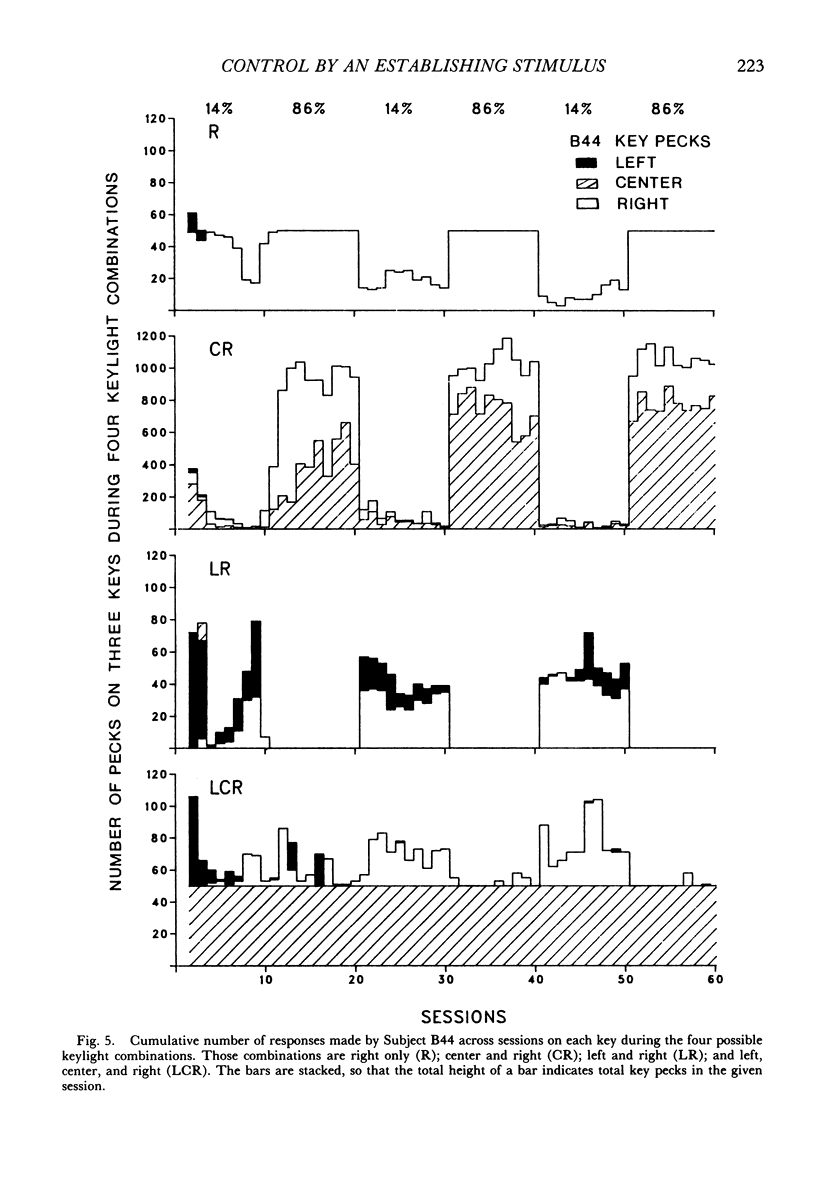
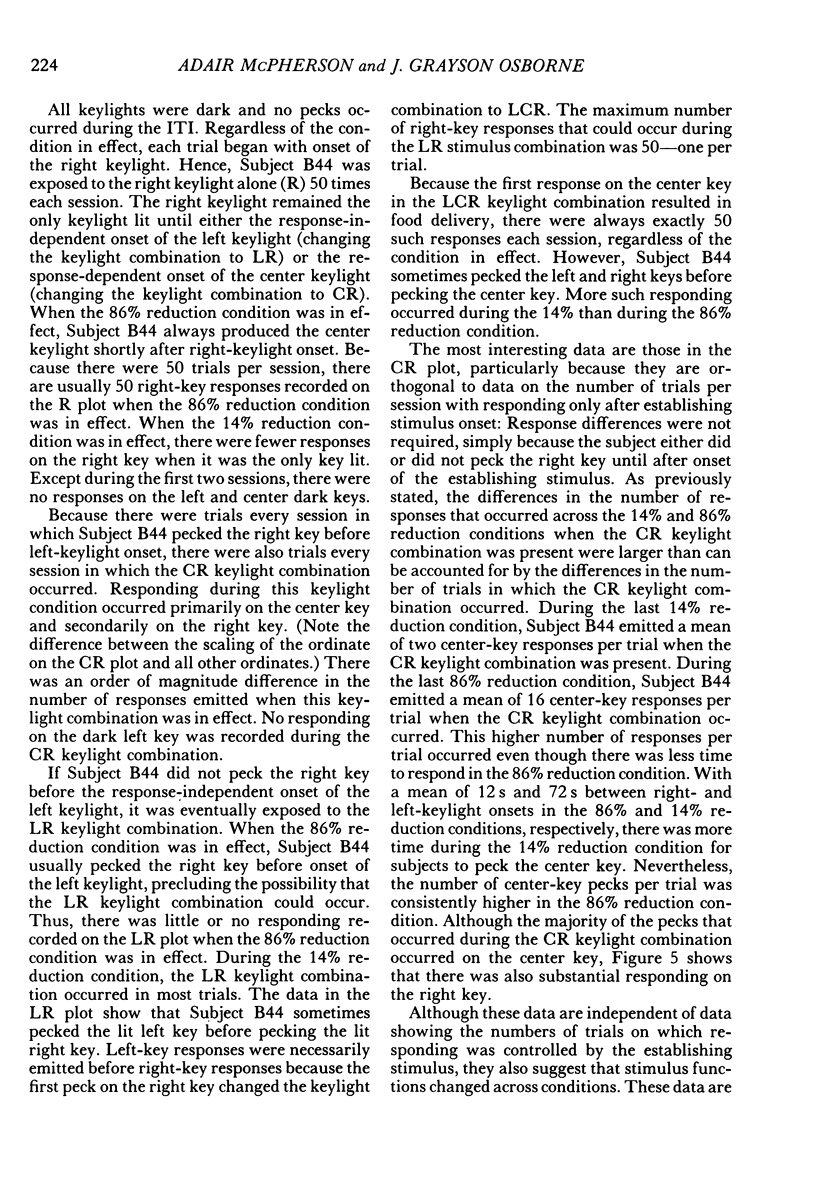
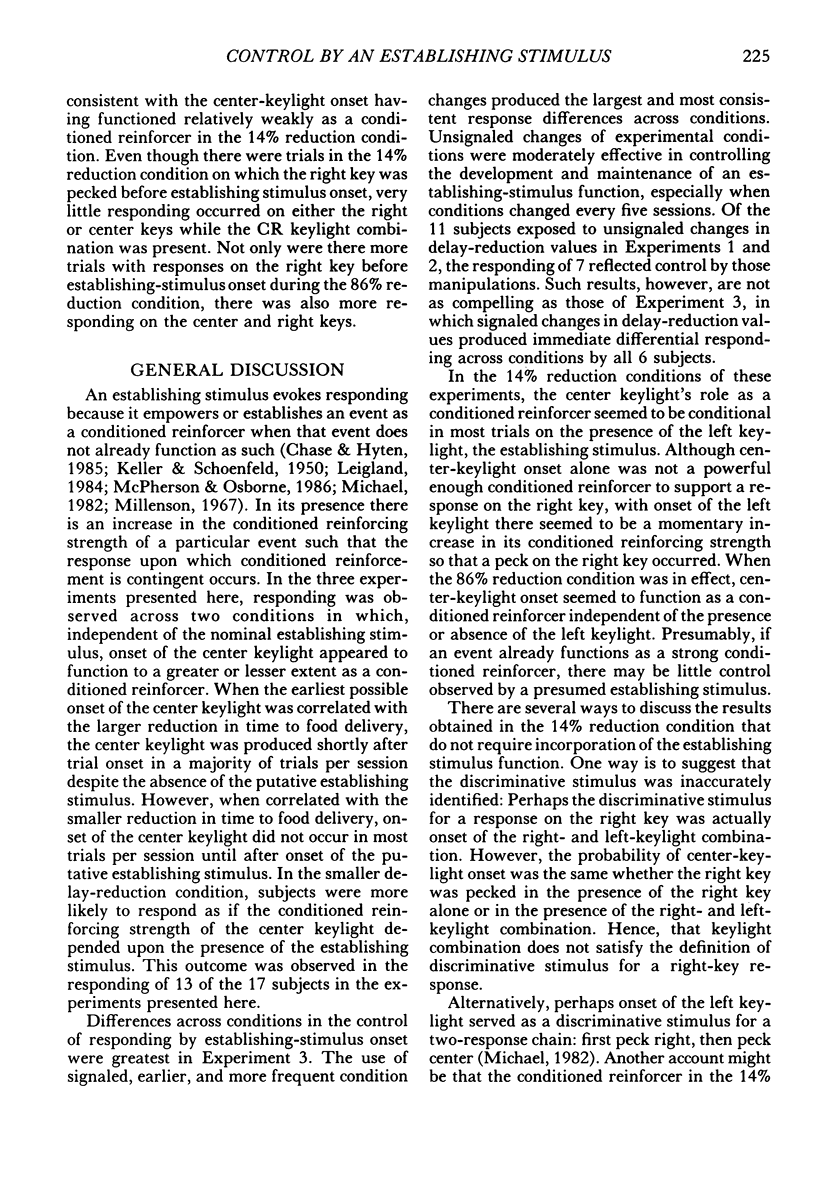
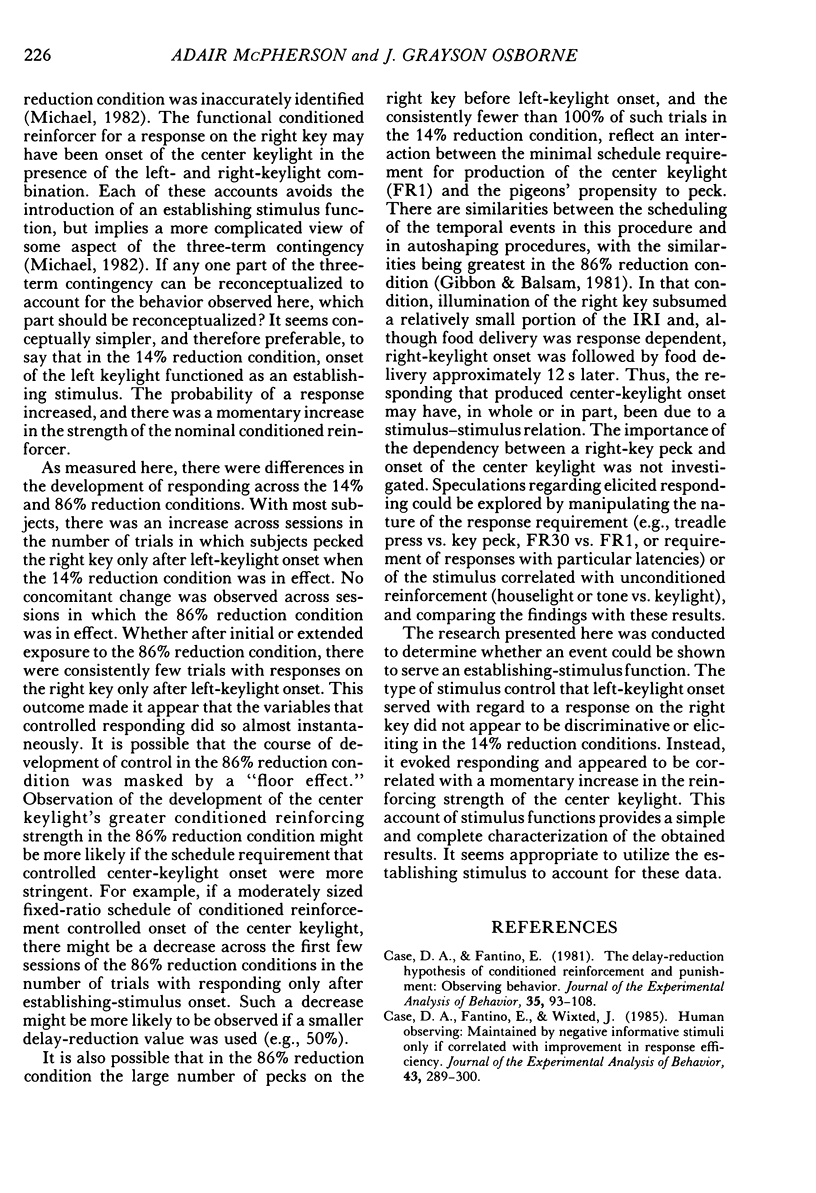
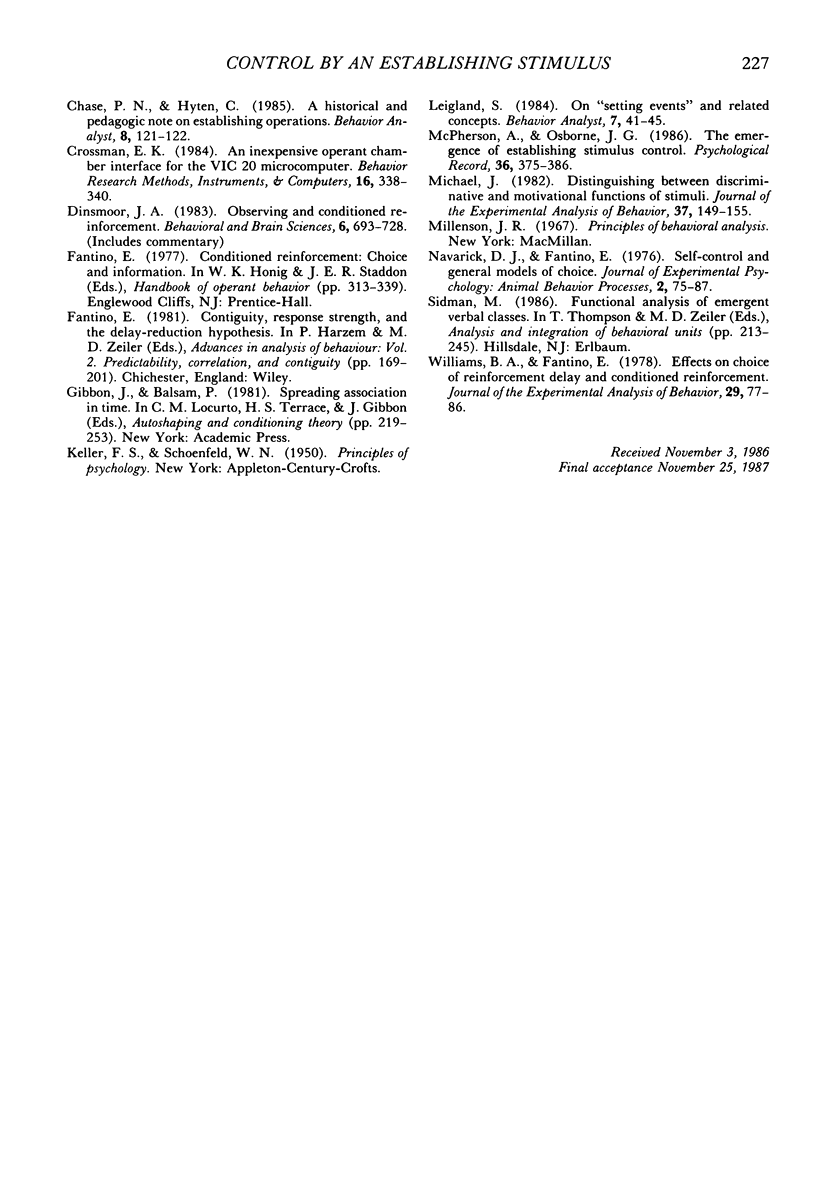
Selected References
These references are in PubMed. This may not be the complete list of references from this article.
- Case D. A., Fantino E. The delay-reduction hypothesis of conditioned reinforcement and punishment: Observing behavior. J Exp Anal Behav. 1981 Jan;35(1):93–108. doi: 10.1901/jeab.1981.35-93. [DOI] [PMC free article] [PubMed] [Google Scholar]
- Case D. A., Fantino E., Wixted J. Human observing: maintained by negative informative stimuli only if correlated with improvement in response efficiency. J Exp Anal Behav. 1985 May;43(3):289–300. doi: 10.1901/jeab.1985.43-289. [DOI] [PMC free article] [PubMed] [Google Scholar]
- Michael J. Distinguishing between discriminative and motivational functions of stimuli. J Exp Anal Behav. 1982 Jan;37(1):149–155. doi: 10.1901/jeab.1982.37-149. [DOI] [PMC free article] [PubMed] [Google Scholar]
- Williams B. A., Fantino E. Effects on choice of reinforcement delay and conditioned reinforcement. J Exp Anal Behav. 1978 Jan;29(1):77–86. doi: 10.1901/jeab.1978.29-77. [DOI] [PMC free article] [PubMed] [Google Scholar]


